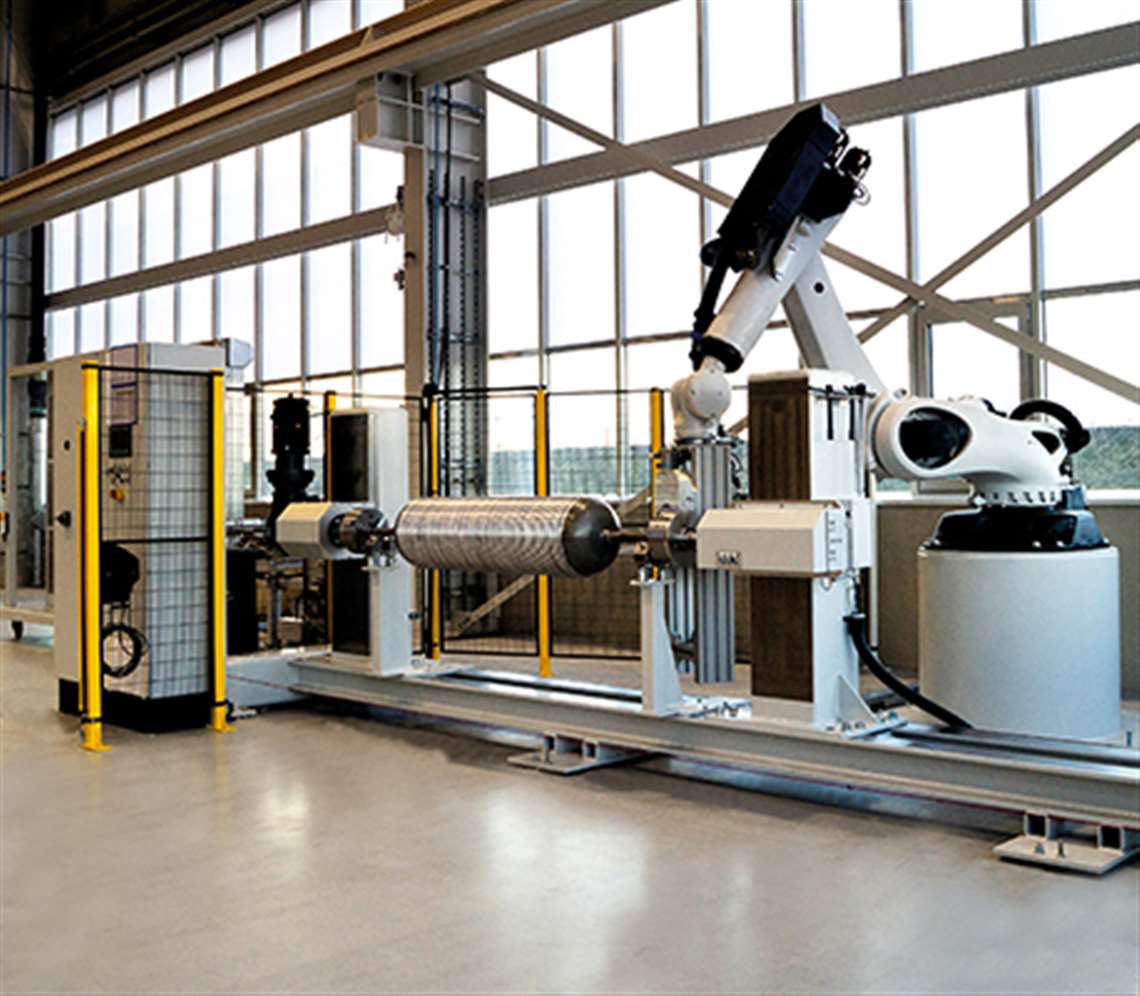Liebherr Employs Carbon Fibre Reinforced Plastic
25 May 2020

Liebherr’s plant in Kirchdorf an der Iller, Germany, manufactures among others hydraulic cylinders and has become the company’s hub for research and implementation of carbon fibre reinforced plastic (CRP) in its product portfolio; the company focuses on the production of reinforced hydraulic cylinders as well as other components.
But why use CRP for the manufacturing of components that have to withstand high stresses and operate in difficult environments? There are actually quite a few reasons and Dominic Gottwald, a specialist in Composites Technology for Liebherr Components explained them for the benefit of our readers.
“CRP has a number of exceptional properties. Its stiffness and tensile strength can be many times over those of steel, despite a much lower density,” said Gottwald. “However, there are other useful material properties which can be identified only at a second glance. Take for example non-magnetic behaviour, non-corrosiveness, electrical properties and adjustable thermal expansion.
“The characteristics of the fibre reinforced composites are anisotropic: by changing the fibres orientation or the constituents like fibre and resin themselves, the material can be adjusted to the requirements of specific loads and applications. By doing so, CRP is used in the most efficient and target-orientated way.”
The market and technology have made big steps and now can offer a variety of fibre materials, matrix systems and manufacturing processes. CRP composites can be flexibly designed with a wide choice between starting materials and by choosing the optimal orientation of the fibres. The resulting material can be adjusted according to the application profile by working on its rigidity, strength and density.
Liebherr Components in Kirchdorf has the in-house capacity and experience to carry out the whole process starting with the analysis of the customer’s application, taking into account the entire system and its working environment, and through to the detailed analysis of the fibre dimensioning, optimization and construction. The manufacturing is based on automated production processes that ensure consistent high quality and lead to continuous process improvement. An important part of the studies Liebherr made to employ CRP in its components started with the selection of the conventional materials to be replaced in order to optimize weight and performance.
The use of CRP, however, also faces challenges and as explained by Gottwald, the main advantage actually involves the main challenge: “The determination of the perfect composition requires a deep understanding of materials, applications and their environment.
“Solutions for connections between CRP and other materials, for example steel, and wear surfaces are being studied. On this, Liebherr has patents in the registration phase.”
The Kirchdorf location has become Liebherr’s hub for CRP technology. The facility has a dedicated CRP team dealing with R&D, engineering, technical calculations, production and sales.
“In terms of manufacturing, Liebherr has a deep understanding of the various manufacturing processes with CRP and employs state-of-the-art production machines as for example 6+2-axles units that can handle complex geometries.” said Gottwald. “We are currently focusing on the optimization of the filament winding process in serial production where our facility can already handle highly flexible filament winding processes.” Gottwald added that wet- and dry-winding processes as well as TowPreg winding have been explored and need to be individually chosen with regard to the product’s specifications.”
Liebherr is able to process high tensile (HT), intermediate modulus (IM) and high modulus (HM) fibres. They vary from each other for stiffness, tensile strength and cost. The Kirchdorf facility reaches a high efficiency thanks to its ability to process raw materials, that is fibres and resins, instead of having to rely on pre-processed products like fabrics.
Currently, Liebherr Components is utilizing CRP in the manufacturing of hydraulic products and especially cylinders. According to Gottwald, other projects in mechanical engineering and industrial applications are ongoing. Besides utilizing CRP components in its own machines, Liebherr is offering CRP solutions to the open market. “The understanding of composite materials in various markets is growing fast and costs can be reduced thanks to new processes in series production and to the price structure of the raw materials.”
As far as new applications are concerned, Gottwald commented: “Besides CRP-established industries as for example automotive and aerospace, we expect mechanical engineering and construction machinery to catch up.”
STAY CONNECTED




Receive the information you need when you need it through our world-leading magazines, newsletters and daily briefings.
POWER SOURCING GUIDE
The trusted reference and buyer’s guide for 83 years
The original “desktop search engine,” guiding nearly 10,000 users in more than 90 countries it is the primary reference for specifications and details on all the components that go into engine systems.
Visit Now
CONNECT WITH THE TEAM









